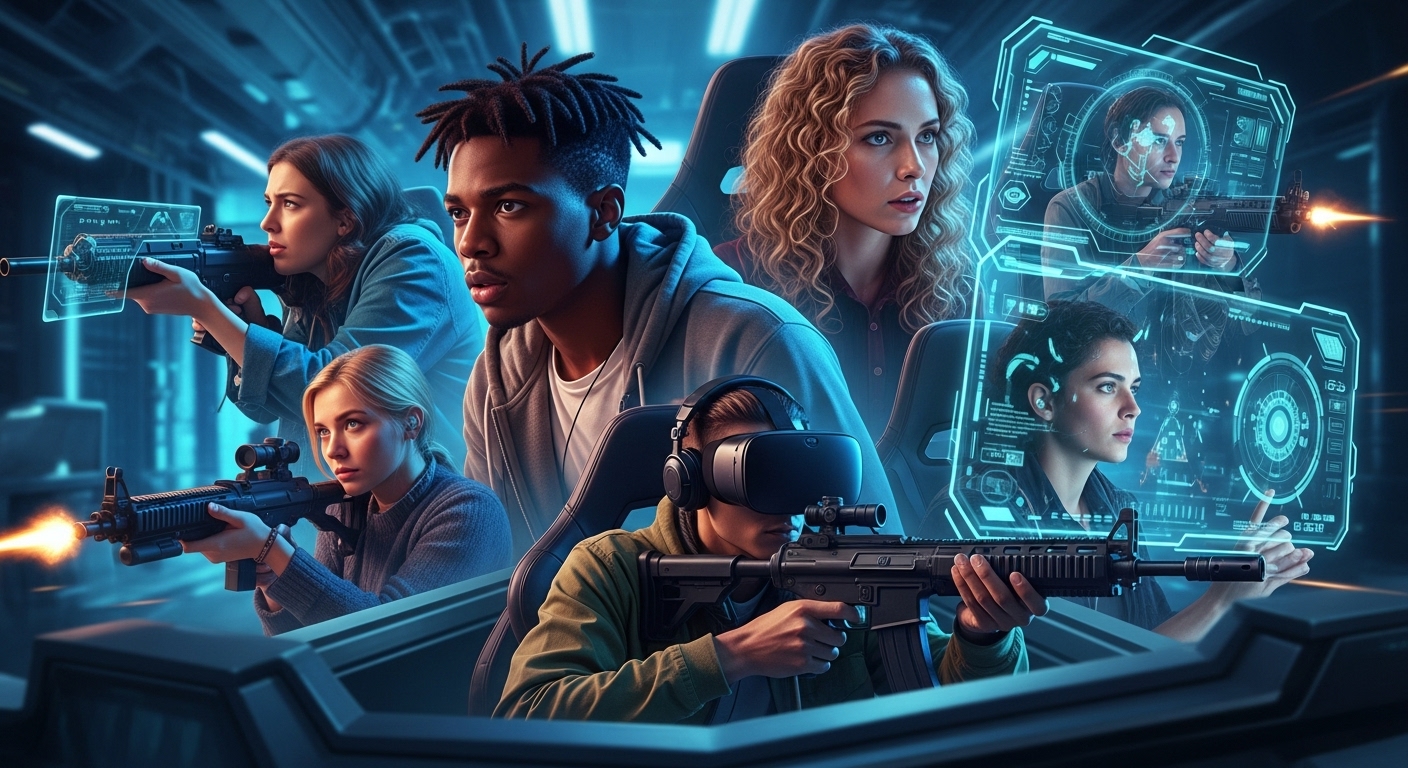First-person shooter games, or as they’re often called, FPS games, have been a staple in the gaming industry for decades now. When you think of iconic titles like “Doom,” “Call of Duty,” or “Counter-Strike,” it’s hard not to appreciate how these games have shaped and defined a large part of the video game landscape. But what’s really going on behind the pixels and headshots? Let’s dive into the nuances of FPS games, their history, evolution, and why they continue to captivate millions worldwide.
The Evolution of FPS Games
Back in the early days, FPS games were groundbreaking. “Wolfenstein 3D,” launched in 1992, is often credited as pioneering this genre. It set players in a maze with the first-person perspective that FPS games are known for. A year later, “Doom” redefined what was possible, enhancing graphics, gameplay, and introducing multiplayer options.
From Pixels to Realism
Fast forward to today, and the evolution is staggering. Graphics that once looked like a mishmash of pixels now boast ultra-realistic environments and life-like character models. Games like “Battlefield” and “Far Cry” have leveraged advanced graphics engines to create immersive worlds. It’s not just about shooting anymore; it’s about the experience and the story.
Gameplay Mechanics
- Movement and Control: Modern FPS games offer a range of movements, from sprinting and sliding to jumping and even parkour.
- Weapon Variety: Games today provide a plethora of weapons, each with unique characteristics, recoil patterns, and tactical uses.
- AI and Enemies: Enemy AI has become more sophisticated, requiring players to strategize and adapt on the fly.
The Role of Multiplayer in FPS
The multiplayer aspect has really taken off, with games like “Apex Legends” and “Fortnite” pushing boundaries. These games aren’t just about shooting; they require teamwork, strategy, and quick reflexes. With innovative modes, they keep players coming back for more.
The Competitive Scene
Competitive gaming has become a massive industry, with FPS games at the forefront. Esports tournaments for games like “Counter-Strike: Global Offensive” and “Overwatch” draw huge audiences. Professional players train for hours, perfecting aim and strategy. While the casual gamer might enjoy a quick match, the pros take it to a whole new level.
Impact of FPS on Technology
FPS games have driven technological advancements in hardware and software. The demand for better graphics cards, faster processors, and more responsive input devices has skyrocketed. Gaming companies push the envelope to deliver cutting-edge experiences that require top-tier equipment.
VR and FPS
Virtual reality is another area where FPS games shine. The immersive nature of VR perfectly complements the first-person perspective. Games like “Half-Life: Alyx” are setting new standards, offering players a chance to dive deeper into the gaming world. You can read more about the technological impact of FPS games in this BBC article.
The Cultural Impact of FPS Games
Beyond just tech, FPS games have permeated popular culture. They’ve inspired movies, merchandise, and even slang. Remember “Leeroy Jenkins”? It’s a phrase that originated from a humorous incident in “World of Warcraft” but reflects the high-stakes excitement prominent in many FPS titles.
Representation and Storytelling
Storytelling in FPS games has taken a leap forward. Titles now include rich narratives and diverse characters. “Bioshock” explores philosophical themes, while “The Last of Us” delivers emotional depth not previously associated with first-person shooters.
| Game | Release Year | Notable Feature |
|---|---|---|
| Wolfenstein 3D | 1992 | First mainstream FPS |
| Doom | 1993 | Introduced multiplayer |
| Half-Life | 1998 | Advanced AI and storytelling |
| Call of Duty 4: Modern Warfare | 2007 | Popularized online multiplayer |
Controversies and Criticisms
No discussion about FPS games would be complete without touching on the controversies. Often criticized for violence, games like “Grand Theft Auto” (though not strictly FPS) have sparked debates about their influence on behavior. However, research is mixed, and many argue that these games offer a form of stress relief and are a scapegoat for broader societal issues.
Regulation and Ratings
The industry has responded by implementing stricter regulations and ratings. Organizations like the ESRB ensure games are appropriately labeled, helping parents make informed decisions about what their kids play.
FAQs About FPS Games
- What’s the appeal of FPS games? For many, it’s the adrenaline rush, the reflex challenge, and the thrill of competition. Also, they can be a fantastic way to hang out with friends online.
- Are FPS games too violent? Well, some argue that they glamorize violence. But context matters, and not all FPS games are about mindless shooting. Many have deep stories and moral choices.
- What’s the best FPS game out there? That’s subjective! Some might say “Call of Duty” for its fast-paced action, while others might lean towards “Half-Life” for its story.
- Can FPS games improve reflexes? It seems so. Studies suggest they might help with hand-eye coordination and reaction times. But moderation is key.
- How do I start playing FPS games? Start with classics or modern titles with robust tutorials. And, definitely, play with friends who can show you the ropes.
So, there you have it. FPS games are a fascinating blend of technology, culture, and interactive fun. Whether you’re a seasoned veteran or a curious newbie, there’s always something new to explore in this ever-evolving genre. Keep gaming, keep exploring, and see where the next headshot takes you.


